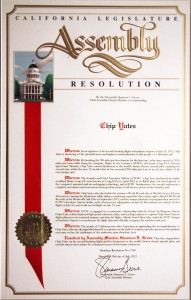Keunggulan Main di Situs Slot Online Terpercaya buat Pemula. Bertaruh dalam perjudian buat sejumlah pemainnya terhitung soal yang membahagiakan. Kerap ada dari mereka yang terus taruhan tiap harinya dalam waktu yang lama. Model judi dimainkan lantas cukup beraneka serta bisa disamakan dengan impian tiap-tiap pemainnya. Tiap permainan itu juga menjajakan kesan main berlainan tergantung di tingkat kesusahan dari model itu.
Salah satu permainan yang kerap jadi opsi lantaran ringan trik memainkan yakni mesin slot. Bukan hanya simpel, banyak orang-orang miliki pikiran kalau memainkan cuman butuh peruntungan pemainnya saja. Meskipun sebenarnya buat dapat meraih sejumlah keuntungan, kamu pun perlu atur kiat tepat. Tapi, ketimbang itu kamu harus masuk sama web paling dipercaya lantaran keistimewaannya. Kerap kelebihan itu cuma dipunyai oleh situs online bisa dipercaya saja.
Serba Serbi Mengenai Situs Slot Online Terpercaya
Bagi kamu masih yang pemula di dunia permainan judi, barangkali belum ketahui betul dengan apakah itu situs main slot secara dalam jaringan. Website untuk dapat taruhan slot dengan aman dan nyaman ini disajikan oleh suatu biro judi. Agen itu memberi peluang biar seluruh pemain dapat rasakan main mesin slot. Walaupun mereka tak dapat memainkan langsung di casino, tapi masih rasakan kehebohan main mesin slot dari handphone android.
Dengan memakai situs seperti ini, kamu dapat merasai kehebohan dari obyek yang ada. Tapi, kamu harus lebih berwaspada ketika mulai jatuhkan pilohan di satu situs sebab terdapat banyak pelaku nakal. Mereka ini umumnya punya keinginan buat menipu banyak anggota yang tergabung serta mendapatkan keuntungan dari pemain sebanyaknya. Oleh lantaran itu, kamu pun butuh data tentang ciri-ciri situs online bisa dipercaya biar mendapatkan sejumlah keuntungan darinya.
Keunggulan dari Main di Situs Slot Terpercaya
Sudah bukan jadi rahasia kembali apabila saat ini terdapat banyak bandar judi yang tersebar. Hingga kamu sebagai pemain pemula tidak terasa kesukaran untuk dapat mendapati blog online dapat dipercaya itu. Penting diketahui jika ketika mulai main kamu mesti tergabung sama web bisa dipercaya biar memperoleh bermacam keuntungan dari keunggulan yang dipunyai. Jikalau kamu ingin ketahui apa keistimewaannya, berikut salah satunya: slot online terpercaya
Situs slot online terpercaya memberikan banyak bonus
Keunggulan dari main judi di web dalam jaringan situs slot online terbaik 2022 buat pemain pemula ialah adanya pelbagai bonus. Umumnya, pemain yang anyar pertama kalinya tergabung pada satu situs dapat mendapati bonus buat pertama kali. Bonus itu berwujud bonus new peserta, diberikan cuma sekali waktu masuk dengan sebuah blog. Tapi, bonus itu bukan hanya sampai di sana saja karena ada banyak bonus lain untuk pemainnya..
Tersedia beragam model slot menarik
Keunggulan selanjutnya merupakan tersedianya type permainan slot yang lebih bermacam. Pastilah perihal itu penting buat pemain pemula biar cari mesin slot buat main. Kian banyak terdapat pilihan pasti akan bikin kamu lebih lepas dalam menyeleksi permainan sesenang hati kiranya mengundang perhatian.
Kemudahan waktu kerjakan bisnis
Keunggulan satu ini cuma dapat kamu temukan waktu taruhan slot secara dalam jaringan, yakni keringanan dalam berbisnis. Ditambah lagi sekarang udah ada beberapa teknik pembayaran bisnis judi ada serta dapat dipakai dengan gampang. Juga prosesnya lantas termasuk gampang serta dijalankan secara cepat. Maka untuk pemain anyar tidak usah takut bila proses negosiasinya bakal sukar serta menggunakan beberapa waktu.
Itu barusan sedikit info perihal keunggulan dari main dalam sebuah situs slot online bisa dipercaya untuk banyak pemain pemula.

